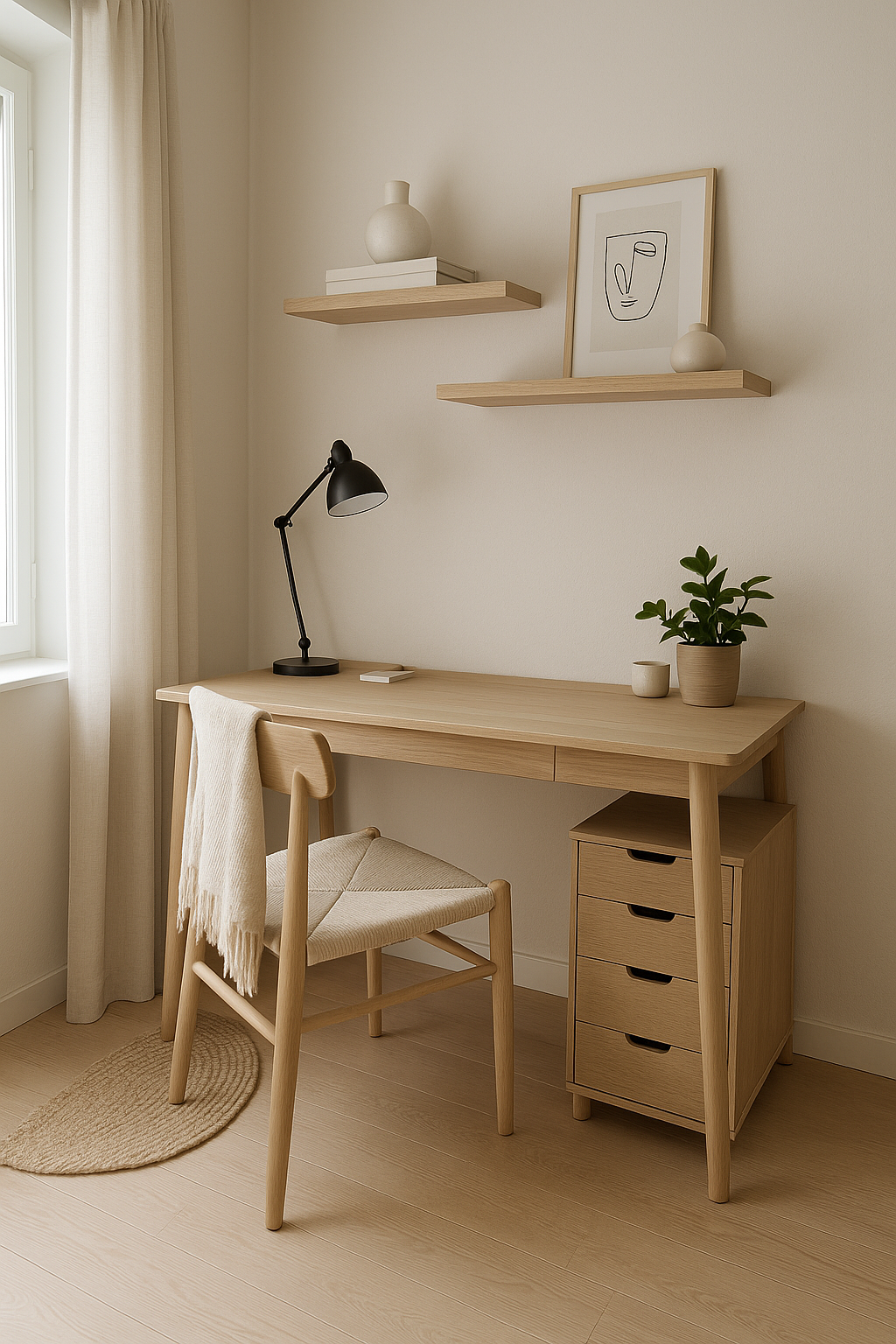In small apartments, how you treat your windows can have a big impact. Curtains and blinds aren’t just for privacy or blocking light—they’re powerful design tools that can influence how large, bright, and open your home feels.
When chosen thoughtfully, window treatments can visually stretch walls, enhance natural light, and add softness and elegance without taking up floor space. This article will guide you through using curtains and blinds strategically to create the illusion of more space in your apartment.
1. Choose Light, Airy Fabrics
Heavy, dark curtains can weigh a room down and make it feel smaller.
Best fabric types:
- Linen or cotton blends: Soft, breathable, and naturally textured
- Sheer or semi-sheer fabrics: Allow light to filter through while maintaining privacy
- Voile or muslin: Lightweight and affordable
Light fabrics soften hard lines in small rooms and help bounce natural light across the space.
2. Stick to Light or Neutral Colors
Color makes a huge difference in how open your apartment feels.
Ideal curtain colors:
- White
- Ivory
- Beige
- Soft gray
- Pale greige
- Pastel tones like blush, sage, or powder blue (used subtly)
Avoid dark or bold colors unless used sparingly for contrast—darker curtains can shrink visual space.
3. Hang Curtains Higher Than the Window
A classic interior design trick: mount curtain rods closer to the ceiling, not just above the window frame.
Why it works:
- Creates the illusion of taller ceilings
- Draws the eye upward
- Makes the wall feel more expansive
Install the rod at least 15–20 cm (6–8 in) above the window or right below the ceiling for maximum height effect.
4. Extend Curtains Wider Than the Window Frame
Mounting curtain rods wider than the window—by about 15–30 cm (6–12 in) on each side—gives the illusion of a larger window and lets in more light when curtains are open.
Benefits:
- Makes walls feel broader
- Avoids blocking precious daylight
- Allows full window exposure during the day
For small rooms, every bit of visual space matters—don’t crowd the window.
5. Let Curtains Touch (or Pool at) the Floor
Curtains that hang all the way to the floor elongate your walls and add a touch of elegance.
Options:
- Just touching the floor for a clean, tailored look
- Slight “puddle” on the floor for a soft, romantic effect
Avoid curtains that are too short—they can break the vertical line and make the space feel awkward or unfinished.
6. Consider Ceiling-Mounted Curtain Tracks
Especially useful in tight areas or where wall space is limited, ceiling-mounted tracks allow you to:
- Install curtains from wall to wall
- Create a “wall” effect that divides spaces
- Make small rooms feel grander
These tracks also work well in studios to separate your home office, bed, or dressing area.
7. Use Sheer Curtains with Blackout Layers
If you need both light and privacy (or sleep in the same room), layer sheer curtains with blackout panels.
Layering setup:
- Closest to window: sheer curtain
- Outer layer: opaque or blackout panel
Use a double rod or track system to switch easily between light and privacy while keeping a soft, cohesive look.
8. Blinds That Disappear or Blend In
If you prefer blinds over curtains, the trick is to make them subtle.
Ideal blind types for small spaces:
- Roller blinds in neutral shades
- Roman shades in linen or cotton
- Wooden or faux-wood blinds in white or light wood tones
Mount blinds inside the window frame if possible, so they don’t take up visual space. Or choose top-down, bottom-up styles to allow privacy without losing light.
9. Match Curtain Color to the Wall
This tip is often overlooked but very effective. When curtains blend with the wall color, they:
- Create seamless lines
- Don’t interrupt visual flow
- Make windows look larger and more architectural
This is particularly powerful in minimalist or Scandinavian-style interiors.
10. Add Visual Height with Vertical Patterns
Subtle vertical stripes or patterns can elongate a room.
Great choices:
- Tone-on-tone stripe curtains
- Light vertical embroidery
- Textured fabrics with up-and-down weaves
Avoid horizontal stripes, which can make a room feel wider but shorter—not ideal for low ceilings.
11. Use Curtains to Define or Separate Spaces
In small apartments, curtains can double as soft dividers.
Ideas:
- Use full-length curtains to enclose a desk or bed nook
- Hang sheer curtains from the ceiling to separate a reading corner
- Use curtain rods or tracks on the ceiling to replace bulky dividers
This adds function while maintaining a feeling of openness.
12. Opt for Minimal or Hidden Hardware
Choose slim curtain rods or tracks that don’t call attention to themselves.
Good hardware choices:
- White or black matte finish
- Brass or brushed metal for a warm touch
- Minimal finials (end caps)
- Ceiling track systems (hidden for clean look)
Avoid bulky rods and overly ornate hardware—they can feel heavy in tight quarters.
13. Keep Window Treatments Consistent
If your apartment is small and open-plan, choose one curtain/blind style throughout.
Why this helps:
- Creates visual harmony
- Avoids jarring transitions between rooms
- Makes the whole space feel larger and calmer
Even if each room has its own identity, repeating materials or colors unifies the design.
14. Use Tiebacks or Holdbacks for Daylight and Shape
Keeping curtains open neatly during the day helps maximize natural light and keeps your space feeling fresh.
Try:
- Fabric tiebacks in a matching or contrasting color
- Metal or wooden holdbacks mounted on the wall
- Decorative hooks or ropes
This keeps the flow open while giving structure to the window area.
Curtains and blinds are more than functional—they’re a design opportunity. With the right fabric, color, and mounting strategy, your window treatments can open up your apartment, make ceilings feel taller, and visually expand your rooms.
By paying attention to light, length, and simplicity, you can use curtains and blinds not just to cover windows—but to create the illusion of space and beauty in even the smallest homes.

